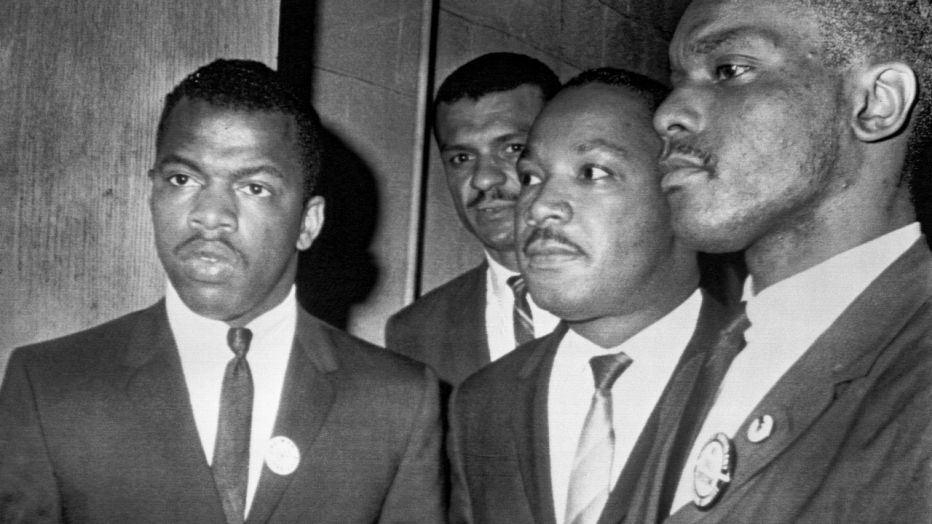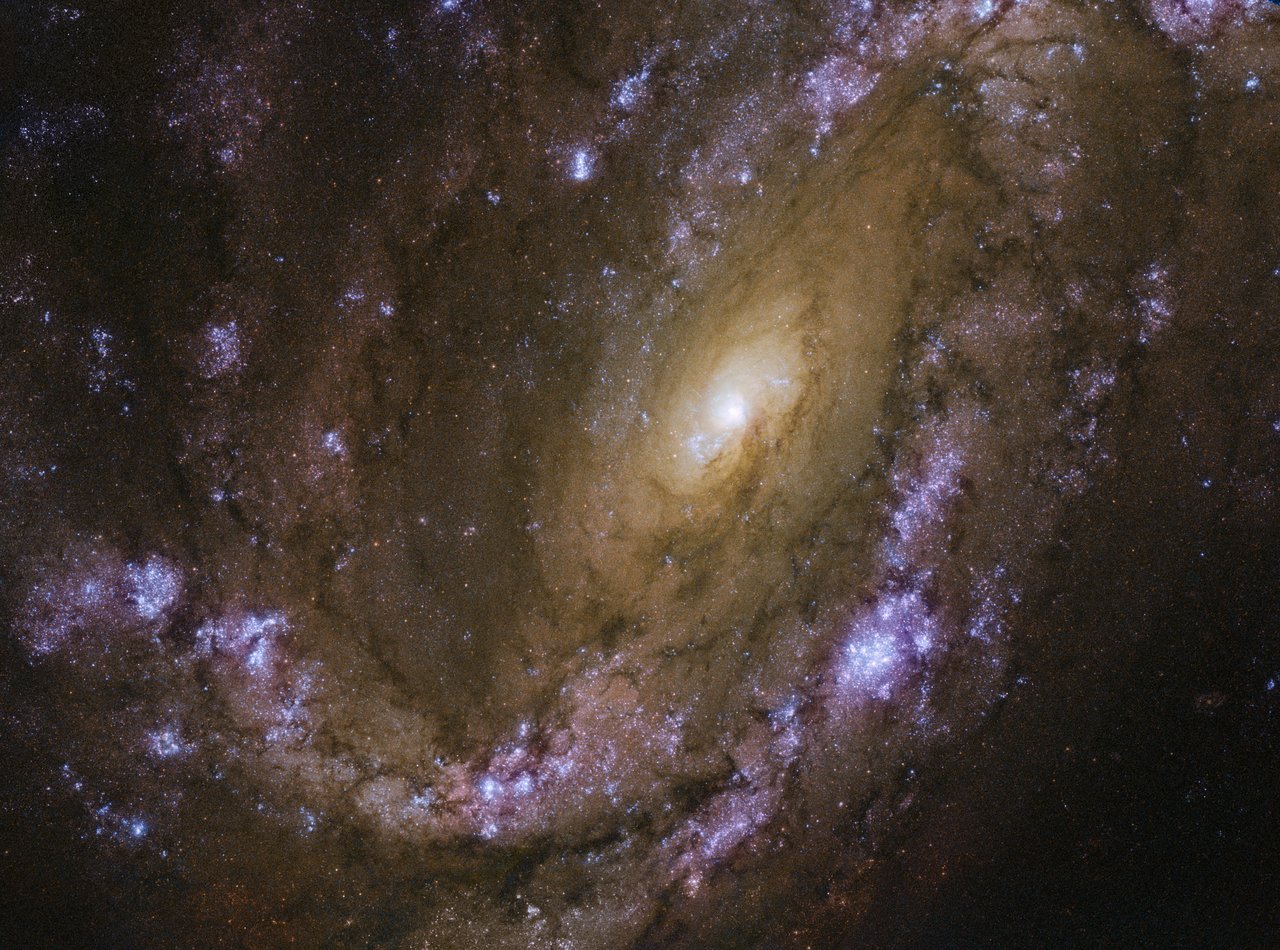Blog
Images of his beating at Selma shocked the nation and led to swift passage of the 1965 Voting Rights Act. He was later called the conscience of the Congress.
Representative John Lewis, a son of sharecroppers and an apostle of nonviolence who was bloodied at Selma and across the Jim Crow South in the historic struggle for racial equality, and who then carried a mantle of moral authority into Congress, died on Friday. He was 80.
His death was confirmed in a statement by Nancy Pelosi, the speaker of the House of Representatives.
Mr. Lewis, a Georgia Democrat, announced on Dec. 29 that he had Stage 4 pancreatic cancer and vowed to fight it with the same passion with which he had battled racial injustice. “I have been in some kind of fight — for freedom, equality, basic human rights — for nearly my entire life,” he said.
On the front lines of the bloody campaign to end Jim Crow laws, with blows to his body and a fractured skull to prove it, Mr. Lewis was a valiant stalwart of the civil rights movement and the last surviving speaker from the March on Washington for Jobs and Freedom in 1963.
More than a half-century later, after the killing in May of George Floyd, a Black man in police custody in Minneapolis, Mr. Lewis welcomed the resulting global demonstrations against police killings of Black people and, more broadly, against systemic racism in many corners of society. He saw those protests as a continuation of his life’s work, though his illness had left him to watch from the sidelines.

When massive stars die at the end of their short lives, they light up the cosmos with bright, explosive bursts of light and material known as supernovae. A supernova event is incredibly energetic and intensely luminous — so much so that it forms what looks like an especially bright new star that slowly fades away over time.
These exploding stars glow so incredibly brightly when they first form that they can be spotted from afar using telescopes such as the NASA/ESA Hubble Space Telescope. The subject of this image, a spiral galaxy named NGC 4051 — about 45 million light-years from Earth — has hosted multiple supernovae in past years. The first was spotted in 1983 (SN 1983I), the second in 2003 (SN 2003ie), and the most recent in 2010 (SN 2010br). These explosive events were seen scattered throughout the centre and spiral arms of NGC 4051.
The SN 1983I and SN 2010br were both categorised as supernovae of type Ic. This type of supernova is produced by the core collapse of a massive star that has lost its outer layer of hydrogen and helium, either via winds or by mass transfer to a companion. Because of this, type Ic — and also type Ib — supernovae are sometimes referred to as stripped core-collapse supernovae.
NGC 4501 sits in the southern part of a cluster of galaxies known as the Ursa Major I Cluster; this cluster is especially rich in spirals such as NGC 4051, and is a subset of the larger Virgo Supercluster, which also houses the Milky Way.

American singer-guitarist Lonnie McIntosh (July 18, 1941 – April 21, 2016), known as Lonnie Mack, was a pioneer of blues-rock music and rock guitar melodic soloing.
Mack emerged in 1963 with the LP, The Wham of that Memphis Man. The album earned him lasting renown both as a blue-eyed soul singer and as a rock guitar style innovator.
In the album’s instrumental tracks, Mack introduced “edgy, aggressive, loud, and fast” blues melodies and runs to the chords-and-riffs format of early rock guitar. These tracks elevated the standard for rock guitar proficiency and led early in the electric guitar’s rise to the top of melodic soloing instruments in rock. As the 1960s progressed, these tracks formed a stylistic “model” for lead guitarists of two new genres, blues-rock and Southern rock.
Shortly after the album’s release, however, the massively popular “British Invasion” hit American shores, and Mack’s career “withered on the vine”.He marked time until 1968, when Rolling Stone magazine rediscovered him and Elektra Records signed him to a three-album contract. He was soon performing in major venues, but his multi-genre Elektra albums underplayed his blues-rock appeal and record sales were tepid. Mack left Elektra in 1971. He spent the next fourteen years as a low-profile country music recording artist, roadhouse performer, sideman, and music-venue proprietor.
In 1985, Mack resurfaced with a successful blues-rock LP, Strike Like Lightning, a promotional tour featuring celebrity guitarist sit-ins, and a concert at Carnegie Hall. In 1990, he released another well-received blues-rock album, Lonnie Mack Live! Attack of the Killer V, then retired from recording. He continued to perform, mostly in smaller venues, until 2004.
Shortly before Mack’s birth, his family moved from Appalachian eastern Kentucky to Dearborn County, Indiana, on the banks of the Ohio River. One of five children, he was born to parents Robert and Sarah Sizemore McIntosh on July 18, 1941, in West Harrison, Indiana, near Cincinnati, Ohio. He was raised on a series of nearby sharecropping farms.
more...Mthutuzeli Dudu Pukwana (18 July 1938 – 30 June 1990) was a South African saxophonist, composer and pianist (although not known for his piano playing).
Dudu Pukwana was born in Walmer Township, Port Elizabeth, South Africa. He grew up studying piano in his family, but in 1956 he switched to alto sax after meeting tenor sax player Nikele Moyake. In 1962, Pukwana won first prize at the Johannesburg Jazz Festival with Moyake’s Jazz Giants (1962 Gallo/Teal). In his early days he also played with Kippie Moeketsi. Chris McGregor then invited him to join the pioneering Blue Notes sextet,where he played along with Mongezi Feza, Nikele Moyake, Johnny Dyani and Louis Moholo. Although the Blue Notes are often considered McGregor’s group, Pukwana was initially the principal composer and all the group members had pivotal roles.
As mixed-race groups were illegal under apartheid, the Blue Notes, increasingly harassed by authorities, emigrated to Europe in 1964, playing in France and Zürich, and eventually settling in London. After The Blue Notes split in the late 1960s, Pukwana joined McGregor’s Brotherhood of Breath big band, which again featured his soloing heavily. As a composer Pukwana wrote “Mra,” one of the best-loved tunes by the Brotherhood.
In February 1967, Pukwana received his first mention in America’s DownBeat magazine: “Tenorist Ronnie Scott’s Old Place, having a hard time breaking even, scored a financial success with the Bob Stuckey Trio, featuring the leader’s organ and altoist Dudu Pukwana”. The trio later expanded to a quartet when Phil Lee joined on guitar,and this group performed twice on BBC’s Jazz Club. As a quartet the band also had a regular session at the Witches Cauldron in Belsize Park. The band completed a series of UK dates throughout 1967, including regular appearances at Ronnie Scott’s Jazz Club.
more...Federico Arístides Soto Alejo (June 30, 1930 – February 4, 2008), better known as Tata Güines, was a Cuban percussionist, bandleader and arranger. He was widely regarded as a master of the conga drum, and alongside Carlos “Patato” Valdés, influential in the development of contemporary Afro-Cuban music, including Afro-Cuban jazz. He specialized in a form of improvisation known as descarga, a format in which he recorded numerous albums throughout the years with Cachao, Frank Emilio Flynn, Estrellas de Areito, Alfredo Rodríguez and Jane Bunnett, among others. In the 1990s he released two critically acclaimed albums as a leader: Pasaporte and Aniversario. His composition “Pa’ gozar” has become a standard of the descarga genre.
Arístides Soto was born in Güines, a town east of Havana in the former province of Havana in Cuba, on June 30, 1930. He grew up with his parents and his seven siblings, leaving school after year 4 to work as a shoeshiner and paperboy. His mother, María de los Ángeles Soto, took care of the house, while his father José Alejo Vasallo “Joseíto” was a cane worker. He was exposed to music from a young age; Joseíto played the tres in the Sexteto Partagás and used to jam with Arsenio Rodríguez, who lived nearby. Tata made his first bongó-like drums out of a sausage jar and a carton of milk in order to join them on percussion. He taught himself the conga by listening to recordings on the radio and playing at concerts, balls and jam sessions as an amateur. He played in his father’s group, as well as in Las Estrellas Nacientes, directed by his uncle Dionisio. He considered Chano Pozo el maestro (the master) and had the opportunity to play with him; Chano encouraged him and Tata never forgot the experience.
https://www.youtube.com/watch?v=Q7IDGvj8vXk
more...Jalacy “Screamin’ Jay” Hawkins (July 18, 1929 – February 12, 2000) was an American singer-songwriter, musician, actor, film producer, and boxer. Famed chiefly for his powerful, operatic vocal delivery and wildly theatrical performances of songs such as “I Put a Spell on You“, he sometimes used macabre props onstage, making him an early pioneer of shock rock.
I have been invited to my 3rd Club Calabash with other local Reggae/Caribbean singers in town. I will do 2 acoustic Marley numbers. Selassie is the Chapel Nyabinghi and Put it On/Rude Boy Ska with looper not tracks.

The galaxy pictured in this Hubble Picture of the Week has an especially evocative name: the Medusa merger.
Often referred to by its somewhat drier New General Catalogue designation of NGC 4194, this was not always one entity, but two. An early galaxy consumed a smaller gas-rich system, throwing out streams of stars and dust out into space. These streams, seen rising from the top of the merger galaxy, resembles the writhing snakes that Medusa, a monster in ancient Greek mythology, famously had on her head in place of hair, lending the object its intriguing name.
The legend of Medusa also held that anyone who saw her face would transform into stone. In this case, you can feast your eyes without fear on the centre of the merging galaxies, a region known as Medusa’s eye. All the cool gas pooling here has triggered a burst of star formation, causing it to stand out brightly against the dark cosmic backdrop.
The Medusa merger is located about 130 million light-years away in the constellation of Ursa Major (The Great Bear).

Chico Freeman (born Earl Lavon Freeman Jr.; July 17, 1949) is a modern jazz tenor saxophonist and trumpeter and son of jazz saxophonist Von Freeman. He began recording as lead musician in 1976 with Morning Prayer, won the New York Jazz Award in 1979 and earned the Stereo ReviewRecord of the Year in 1981 for his album The Outside Within.
Freeman was introduced to the trumpet by his brother Everett, who found a trumpet in the family basement. Freeman began playing, inspired by artists such as Miles Davis. He went to Northwestern University in 1967 with a scholarship for mathematics and played the trumpet in the school, but did not begin playing the saxophone until his junior year. After practicing eight to ten hours per day and trying out for the saxophone section, Freeman quickly changed his major to music, and graduated in 1972. By that time he was proficient in saxophone, trumpet, and piano.
After graduation, Freeman taught at the Association for the Advancement of Creative Musicians School of Music in Chicago and started taking classes as a graduate student at Governors State University, earning a master’s degree in composition and theory. Although most of Freeman’s musical upbringing had been in jazz, at this time he began getting involved in blues music as well. He began playing at local Chicago clubs with artists such as Memphis Slim and Lucky Carmichael.
more...enjamin Alexander Riley Jr. (July 17, 1933 – November 18, 2017) was an American jazz drummer known for his work with Thelonious Monk, as well as Alice Coltrane, Stan Getz, Eddie “Lockjaw” Davis, Ahmad Jamal, and as a member of the group Sphere. During the 1970s and 1980s he was a member of the New York Jazz Quartet.
Benjamin Alexander Riley Jr. was born in Savannah, Georgia, on July 17, 1933, and at the age of four moved with his family to New York City. “Riley performed with Randy Weston, Sonny Stitt, Stan Getz, Junior Mance, Kenny Burrell, Eddie “Lockjaw” Davis–Johnny Griffin (1960–1962), Ahmad Jamal, Billy Taylor, and Ray Bryant. He then spent 1964 to 1967 in Thelonious Monk‘s quartet. After Monk, he played with Alice Coltrane(intermittently between 1968 and 1975), Ron Carter (1975–1977), Jim Hall (1981), and the bands the New York Jazz Quartet (1970s and 1980s) and Sphere. He also played frequently with pianist Abdullah Ibrahim.
Riley died in West Islip, New York on November 18, 2017, aged 84.
https://www.youtube.com/watch?v=GPnr2LFFlOk
more...Joseph Albert Morello (July 17, 1928 – March 12, 2011) was a jazz drummer best known for his work with the Dave Brubeck Quartet. He was particularly noted for playing in the unusual time signatures employed by that group in such pieces as “Take Five” and “Blue Rondo à la Turk“. Popular for its work on college campuses during the 1950s, Brubeck’s group reached new heights with Morello. In June 1959, Morello participated in a recording session with the quartet—completed by the alto saxophonist Paul Desmond and the bassist Eugene Wright—that yielded “Kathy’s Waltz” and “Three to Get Ready”, both of which intermingled 3/4 and 4/4 time signatures.Morello suffered from partial vision from birth, and devoted himself to indoor activities. At six years old, he began studying the violin. Three years later, he was a featured soloist with the Boston Symphony Orchestra, playing Mendelssohn’s Violin Concerto, and again three years later.
At the age of 15, Morello met the violinist Jascha Heifetz and decided that he would never be able to equal Heifetz’s “sound”. Therefore, he switched to drumming, first studying with a show drummer named Joe Sefcik and then George Lawrence Stone, author of the noted drum textbook Stick Control for the Snare Drummer. Stone was so impressed with Morello’s ideas that he incorporated them into his next book, Accents & Rebounds, which is dedicated to Morello. Later, Morello studied with Radio City Music Hall percussionist Billy Gladstone.
After moving to New York City, Morello worked with numerous notable jazz musicians including Johnny Smith, Tal Farlow, Stan Kenton, Phil Woods, Sal Salvador, Marian McPartland, Jay McShann, Art Pepper, and Howard McGhee. After a period of playing in McPartland’s trio, Morello declined invitations to join both Benny Goodman and Tommy Dorsey‘s bands, favoring a temporary two-month tour with the Dave Brubeck Quartet in 1955. Morello remained with Brubeck for well over a decade, departing in 1968. Morello later became an in-demand clinician, teacher and bandleader whose former students include Danny Gottlieb, TigerBill Meligari, Bruce Springsteen E Street Band drummer Max Weinberg, Rich Galichon, Phish drummer Jon Fishman, Gary Feldman, Patrick Wante, Tony Woo, Frankie Valli and the Four Seasons drummer Gerry Polci, Jerry Granelli, RIOT drummer Sandy Slavin, retired Army Blues drummer Steve Fidyk, Glenn Johnson, Pittsburgh drummer Bennett Carlise, Level System author and professional drummer Jeff W. Johnson, and Bon Jovi drummer Tico Torres.
https://www.youtube.com/watch?v=7Kx1GVYPOos
more...Vincent Anthony Guaraldi /ɡəˈrældi/ (July 17, 1928 – February 6, 1976), born Vincent Anthony Dellaglio, was an American jazz pianist noted for his innovative compositions and arrangements and for composing music for animated television adaptations of the Peanuts comic strip including their signature melody, “Linus and Lucy“. He is also known for his performances on piano as a member of Cal Tjader‘s 1950s ensembles and for his own solo career. His 1962 composition “Cast Your Fate to the Wind” became a radio hit and won a Grammy Award in 1963 for Best Original Jazz Composition.
Guaraldi was born in San Francisco’s North Beach area, a place that became very important to his blossoming musical career. His last name changed to “Guaraldi” after his mother, Carmella (née Marcellino), divorced his biological father (whose last name was Dellaglio) and married Tony Guaraldi, who adopted the boy. His maternal uncle was musician, singer, and whistler Muzzy Marcellino. He graduated from Lincoln High School, attended San Francisco State College, and served in the United States Army as a cook in the Korean War.
more...In flamenco a tango (Spanish pronunciation: [ˈtaŋɡo]) is one of the flamenco palos closely related in form and feeling to the rumba flamenca. It is often performed as a finale to a flamenco tiento. Its compás and llamada are the same as that of the farruca and share the farruca’s lively nature. However, the tango is normally performed in the A Phrygian mode. In some English sources the flamenco tango is written with an -s; “the tangos is…”
The flamenco tango is distinct from the flamenco rumba primarily through the guitar playing. In Rumba the guitar flows more freely, whereas in Tangos the accents on beats 2, 3 & 4 are marked clearly with heavy strumming.
more...https://www.youtube.com/watch?v=0LRlmCko58o
more...More Posts
- Sing Miller Day
- World Music with Corvus Corax
- Daily Roots with ITSJAHMIEL
- The Cosmos with NGC 3372
- Lucky Thompson Day
- World Music with Sherrifo Konteh
- Daily Roots with Culture
- The Cosmos with NGC 3190
- Jaki Byard Day
- Erroll Garner Day
- World Music with Paco Soto
- Daily Roots with Amy Winehouse
- The Cosmos with RCW 57
- Marcus Miller Day
- Kenny Drew Jr Day
- Junior Walker Day
- World Music with Amadu Bansang Jobarteh
- Daily Roots with Sly & Robbie
- The Cosmos with NGC 6164